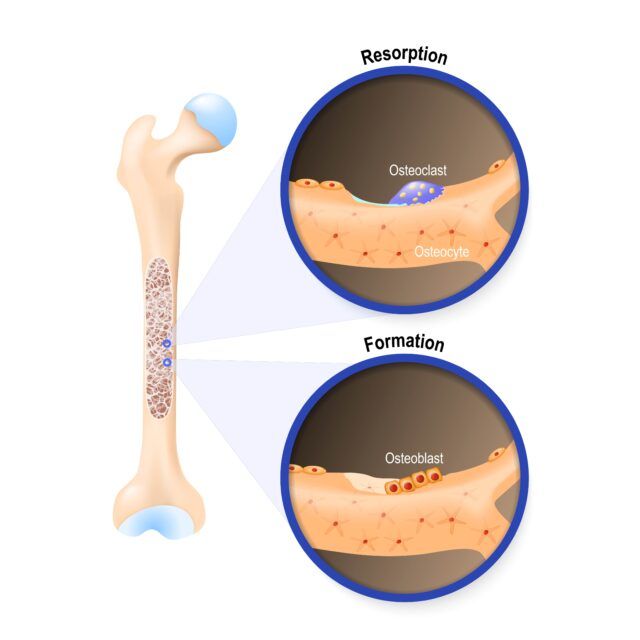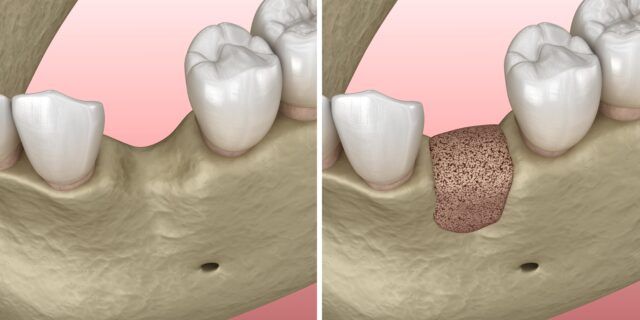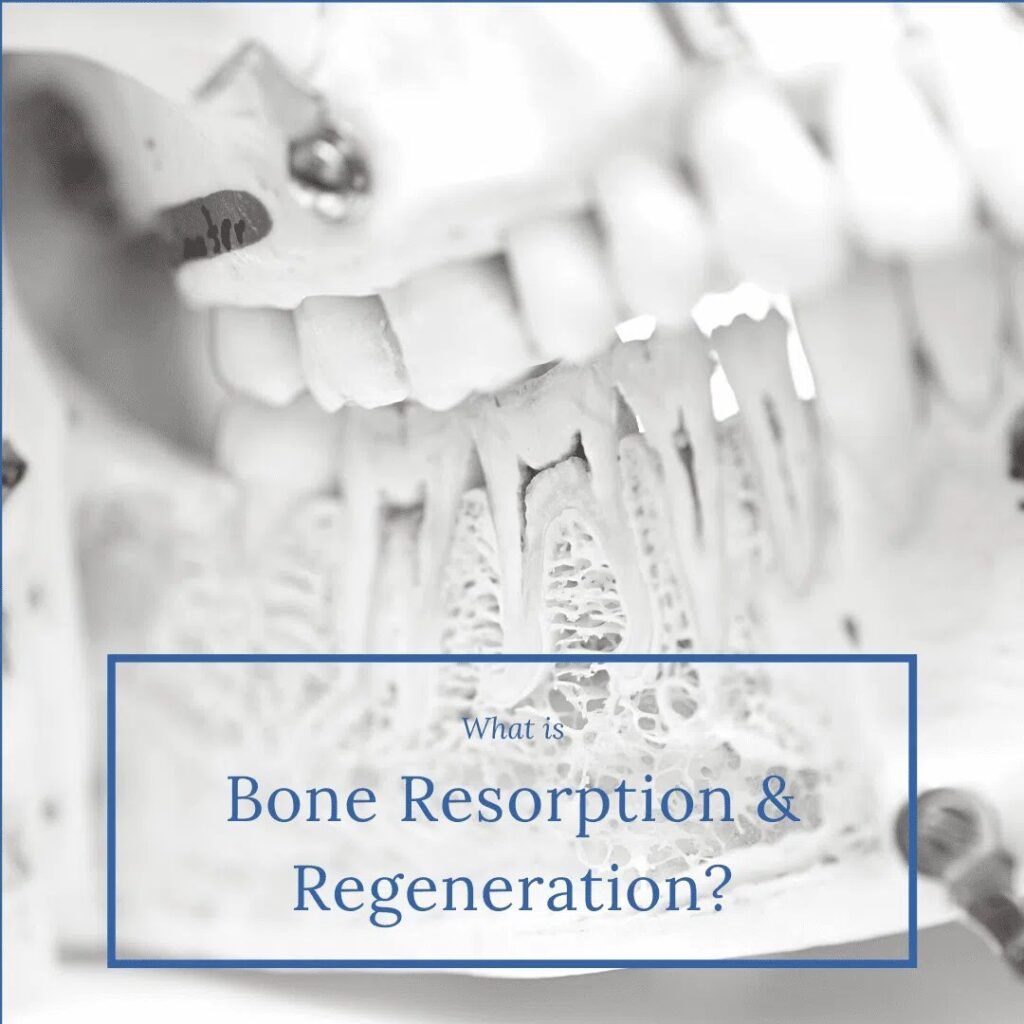Did you know that when you lose a tooth, the jawbone begins to resorb? Bone resorption is the natural process of breaking down bone tissue. This can lead to a loss in bone density and changes in facial structure. If you are missing teeth, it is important to understand bone resorption and regeneration so you can make informed decisions about your dental health. In this blog post, we will discuss the causes and effects of bone resorption, as well as methods of regenerating lost bone tissue.
The Basics of Bone Remodeling

In order to better understand how bone resorption occurs in the first place, we will first need to understand the basics of bone remodeling. Bone remodeling is a natural process that consists of removing old bone (bone resorption) and adding new bone (ossification). This process occurs throughout our lifetime, allowing the bones to continually remodel themselves. According to Duke Orthopedics, bones in an average adult remodel themselves at a rate of 10% per year.
In regards to dentistry, bone remodeling is important to certain dental treatments. For example, bone resorption and ossification are used in orthodontic treatment to move your teeth and stabilize them in a new location. Ossification is also an essential step of having dental implants placed. The bone remodeling process is also necessary to maintain enough bone mass in the jaw. However, when old bone is removed at a faster rate than it is replaced by new bone, the overall bone mass in the jaw decreases.
Bone Resorption: Causes and Effects
Bone resorption can be caused by a number of factors, including missing teeth, gum disease, and radiation therapy.
Missing Teeth
When you lose a tooth, the jawbone begins to shrink. This is because the tooth root was stimulating the bone remodeling process to maintain the necessary bone mass. With the tooth root gone, less bone is needed in that area. As a result, the bone is absorbed at a faster rate than it is replaced, causing the bone to break down. In most cases, bone resorption starts about six months after a tooth is lost.
Gum Disease
Gum disease also causes bone loss, as the bacteria can invade the bone and destroy it.
Radiation Therapy
Radiation therapy can also lead to bone resorption, as it damages the cells that create new bone tissue.
The effects of bone resorption can be quite serious. The loss in bone density can cause the facial bones to shrink, which can change your appearance. It can also lead to a loss in jawbone height, which can make it difficult to chew and speak. In extreme cases, bone resorption can cause the jawbone to collapse completely.
What is Bone Regeneration?

Fortunately, there are ways to regenerate lost bone tissue. One common method is through bone grafts. A bone graft is a surgical procedure that replaces missing or damaged bone tissue with donor bone. This can be done using your own bone, or artificial bone graft material. Once the bone material is placed in areas of low bone mass, it will help stimulate the growth of new bone to reverse bone resorption. In most cases, it takes around 3-6 months for the bone graft material to form new bone.
How Dental Implants Prevent Bone Resorption
When one or more teeth go missing, there are a multitude of reasons to replace the missing tooth or teeth with a dental prosthetic. There are different types of prosthetics for missing teeth such as bridges, dentures, and dental implants. Dental bridges are composed of one or more fake teeth fused to a dental crown on either side that uses the surrounding healthy teeth for support. Dentures are sets of fake teeth on an acrylic base that sit atop the gums and are held in place by suction.

Both bridges and dentures can be used to restore the appearance and partial function of missing teeth. However, these restorations only replace the visible portion of the teeth and do not extend into the jawbone. This means that the jawbone will still not receive enough stimulation to maintain proper bone mass and bone resorption will start to occur. Bone resorption tends to be more prevalent with dentures since dentures are generally used in cases where there are no remaining healthy teeth.
In cases where bone resorption was caused by one or more missing teeth, placing dental implants is usually recommended to prevent future bone resorption. Dental Implants are small titanium screws that are implanted into the jawbone to act as artificial tooth roots. As they heal, they fuse with the jawbone in a process known as osseointegration. This allows them to provide the same bone stimulation as natural tooth roots, meaning that they will maintain bone mass in the jaw. Dental implants are also used to support a crown, bridge, or denture in order to restore the appearance of missing teeth. Ultimately, implant-supported restorations offer the best of both worlds to people with missing teeth, restoring both appearance and function while preserving the jawbone.
As mentioned above, bone resorption usually starts about six months after a tooth is lost. When dental implants are placed within six months of a tooth being lost, this can prevent bone resorption from occurring. In cases where a tooth has been missing for longer than six months or when bone resorption has already started, dental implants can still be used in many cases.
However, they will require a bone graft to be performed to build up depleted bone mass before the implant can be placed. In some cases, specialized types of implants, such as zygomatic or mini implants, can also be used to achieve osseointegration. Rarely, bone loss in the jaw may be so severe that dental implants cannot be placed.
In Conclusion:
If you are missing teeth, it is important to understand the causes and effects of bone resorption. Bone resorption can lead to a loss in bone density, which can change your appearance and make it difficult to chew and speak. There are ways to regenerate lost bone tissue, including bone grafts and dental implants. If you are experiencing any of the symptoms of bone resorption, please consult with your implant dentist.

